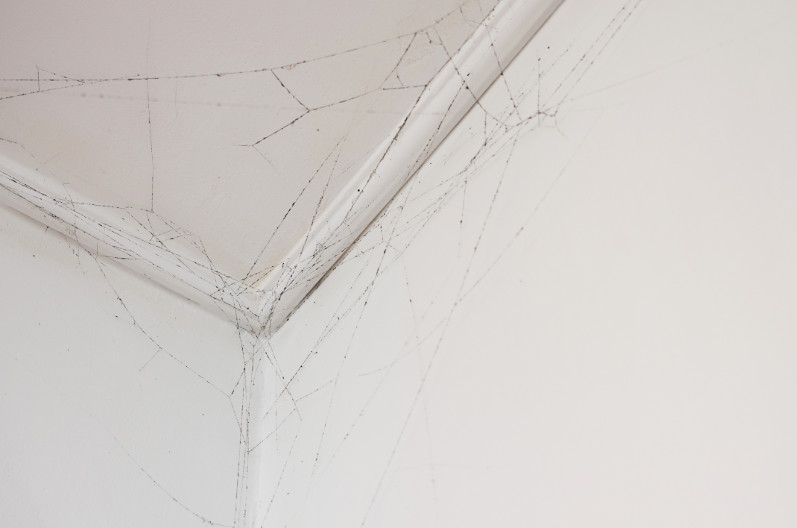If you haven’t heard of soot tags or soot webs, you aren’t alone. However, they are extremely common after even the smallest fire. As hot air and soot move to cooler areas of your home, soot webs can form anywhere that air doesn’t circulate very well. Soot tags are most common in corners where two walls and the ceiling meets. We look at what causes soot webs as well as how to remove soot tags.
What Are Soot Tags?
Soot tags are thread-like chains made from carbon and tar released as a fire burns. They are also called soot webs because they look so similar to spider webs or cobwebs. In fact, most people assume they actually are spider webs covered in soot.
What Causes Soot Webs or Tags?
Fires create heat and release both smoke and soot. Smoke is a vapor made up of very fine particles, while soot is a solid made from powdery or oily carbon and tar.
The heat from the fire is dawn to cooler areas because air naturally wants to create an equilibrium. As that hot air moves, it pulls smoke and soot with it. The soot then forms thread-like tags or webs in areas with low circulation.
How to Clean Soot Tags
The best way to remove soot tags is to start with a vacuum and then clean them with white vinegar. However, stubborn soot webs may need more scrubbing or even repainting to completely remove the stains.
Vacuum up the Soot
Start by sucking up the soot webs with a shop-style vacuum. Without rubbing the hose against the walls or ceiling, move across the soot tags in different directions to remove all the loose soot.
Clean Soot Webs and Stains With White Vinegar
Mix equal parts white vinegar and water in either a spray bottle or a bucket. Then just barely wet a rag with the vinegar and gently scrub to remove the stains.
Wash Walls and Ceilings With Dish Soap
For really oily or sticky soot stains, you may need to wash your walls and ceilings with dish soap. Mix a tablespoon of liquid dish soap with warm water and then scrab any remaining residue off the wall.
Scrub Away Residue With Melamine Sponges
If you still have soot reside, use melamine scrubbing sponges. Also called magic erasers, they are great at soaking up oily and sticky soot stains.
Seal and Paint the Area
Even with all the cleaning methods above, sometimes you just can’t clean the soot away. In this case, you need to seal the area with a stain-blocking primer. Then finish with a top coat of regular paint.
Do you have smoke or soot stains after a fire? Our experts can clean and restore your home fast. Call 1-888-443-3110 now for a free quote on fast fire damage cleanup.





